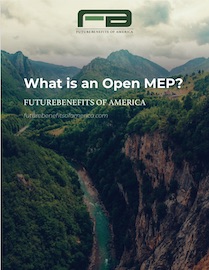A word of caution before we begin:
Be careful what you Google. The PEPs we deal with are not the “Politically Exposed Persons” you’ll find by simply searching “What are PEPs?” Ours are of the financial variety, and in no way involve risks of bribery and corruption by foreign governments. (However, there is nothing stopping such a PEP from opening a PEP with us…just as long as they understand that we operate completely above board.)
In our last post, we introduced the PEP (Pooled Employer Plan), an exciting new retirement plan tool made possible by the recently signed SECURE Act. Today we’ll dive a little deeper into the differences in the retirement planning industry now that PEPs are on the scene.
PEP Defined
In Section 3 of the ERISA (The Employee Retirement Income Security Act of 1974), a new entry has been added to define what constitutes a “Pooled Employer Plan.”
You can find the new rules in the current version of ERISA here on page 22. But we’ll save you some time by summarizing:
A Pooled Employer Plan (PEP) is:
- An individual account plan created to provide retirement benefits to the employees of multiple employers
- A Section 401(a) qualified plan or Section 408 IRA trust. (403(b)s and 457(b)s are not currently included.)
- One in which the employers do not have anything in common other than participation in the plan.
A further simplified definition we like to share with our clients: “A PEP is a retirement plan that allows multiple employers from completely unrelated industries to join together where they weren’t able to before in order to create a retirement plan as a larger group with better leverage to benefit from better prices.”
Differences from Open MEPs
In the past, an Open MEP functioned in basically the same way as the newly created PEP described above. It was either a MEP of unrelated businesses, or it was a plan treated as a single MEP by the Tax Code while simultaneously being treated as multiple plans under ERISA. (It was confusing for everyone involved in the early years.) Thankfully, this new legislation codifies much of what was previously unclear.
While Open MEPs aren’t going anywhere (the name itself is a registered trademark, after all), the SECURE Act has clarified several “gray area” issues in the original law that make PEPs a very attractive alternative…especially to small business owners.
- The “commonality” rule is officially no longer necessary. The original “closed” MEP required that all participants be from the same industry or business sector. Now, participants need only to have the plan itself in common.
- The “bad apple” rule is no longer an issue. Under MEPs, if one of the participants failed to comply with regulations, it meant that the entire plan could be disqualified. This section of the old law is gone. Now, the plan simply has to provide a way to remove any “bad apples” from the group, and the rest of the members will not be affected.
- A “Pooled Plan Provider” (PPP) must be hired. A third-party plan administrator, registered with the Secretary of the Treasury, must be named as a fiduciary responsible for performing all administrative duties. They must also ensure ERISA compliance by everyone who handles plan assets. Employers are no longer responsible for all of this.
Note: Not all MEPs are PEPs. The SECURE Act still allows for several plan variations such as:
- Traditional MEPs (also referred to in the new legislation as “Association Retirement Plans”) made up entirely of businesses that share a common nexus. (They must now make provisions for the new “Bad Apple” regulations and Form 5500 filing requirements, however.)
- “Groups of Plans” which share the same trustee, plan year, and investments, and can file a single Form 5500 together.
- Corporate MEPs are plans in which the controlled group either experienced a change in ownership or are closely associated groups not covered by the same plan. Since they may not meet all of the requirements to be a traditional MEP, this term was created by the Department of Labor in order to classify them better. (The new PEP may work better for these groups, however.)
How PEPs May Impact Retirement
According to the Department of Labor, 38 million American workers do not have access to employer-sponsored retirement savings plans. Many of these employees work for small businesses and nonprofits that have traditionally been hesitant to get into 401(k) plans.
Pooled Employer Plans are a simplified “plug and play” solution that shift the hassle of day-to-day oversight from the employer to the third-party PPP. Also, PEPs allow for employers to associate with a larger pool of businesses. This will ultimately reduce costs, lower fees, and create greater buying power for the group as a whole.
Employers who currently participate in retirement plans may also shift assets out of traditional 401(k) and 403(b) arrangements into PEPs as they discover their advantages. This could ultimately have the effect of drying up many of the long-running existing plans.
One Thing Is Certain
Regardless of how PEPs affect the future of the retirement planning industry, FutureBenefits of America is more than ready.
While the passage of the SECURE Act just now codifies PEPs, we are already the time-tested experts in them. We’ve been successfully guiding our clients through this space (when they were called Open MEPs) for over 10 years!
Find out how we can help you save money, reduce liability, and lighten your workload. Schedule a call to learn more about PEPs for your business or clients by calling us at 888-207-6467 or contact us online.
Next Steps:
Schedule a call with us today and we can answer any questions you have.

Download Our What is an Open MEP? Guide for FREE
Are you providing your employees with the best retirement option?
In this Guide you'll learn:
- The benefits of choosing Open MEPs vs. traditional 401(k)s
- How open architecture investments are better for you and your employees
- Why spreading out fiduciary responsibility is a good thing for everyone

